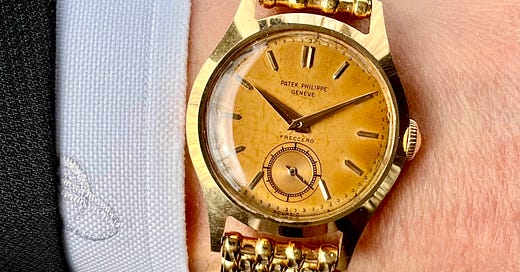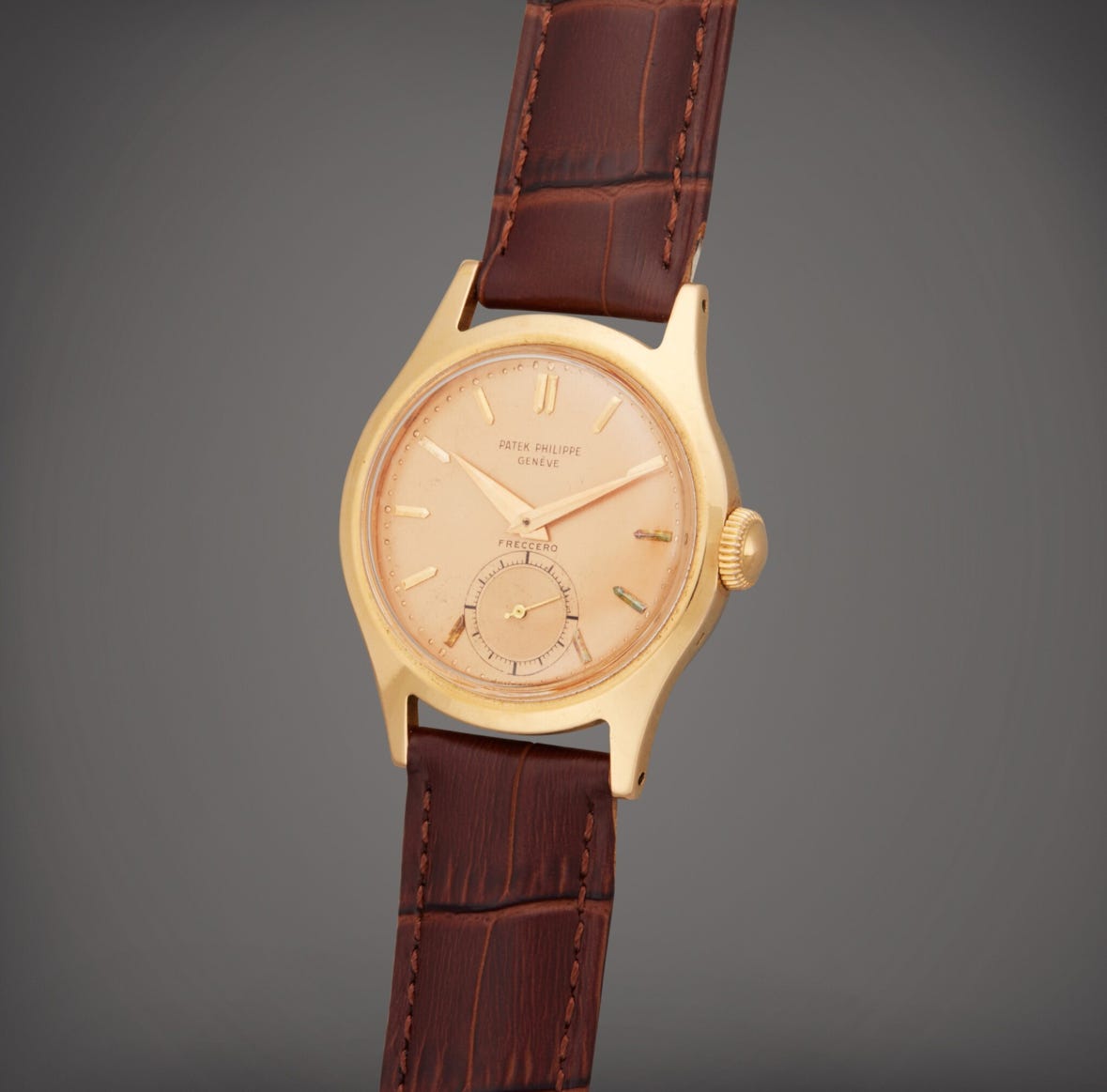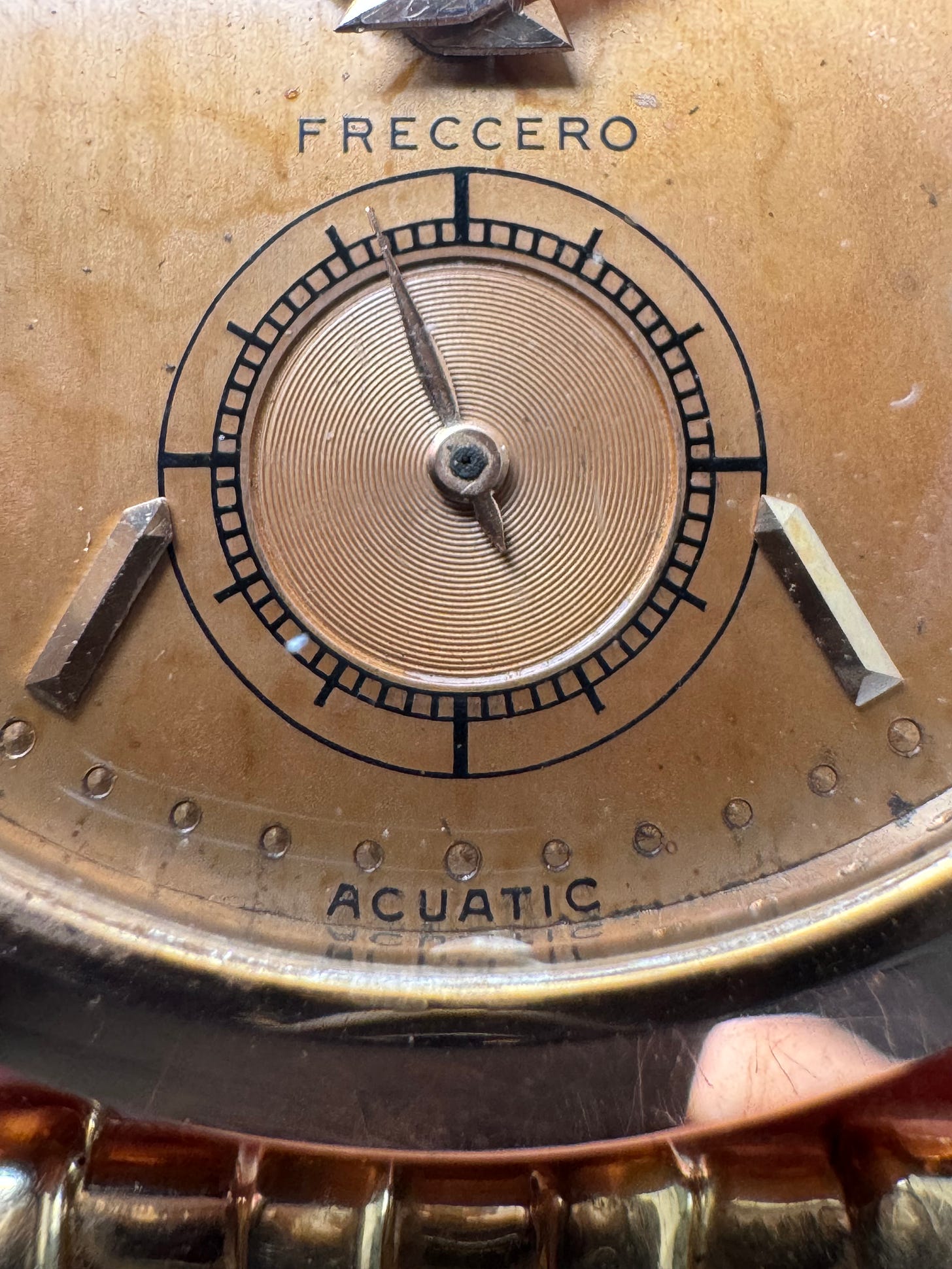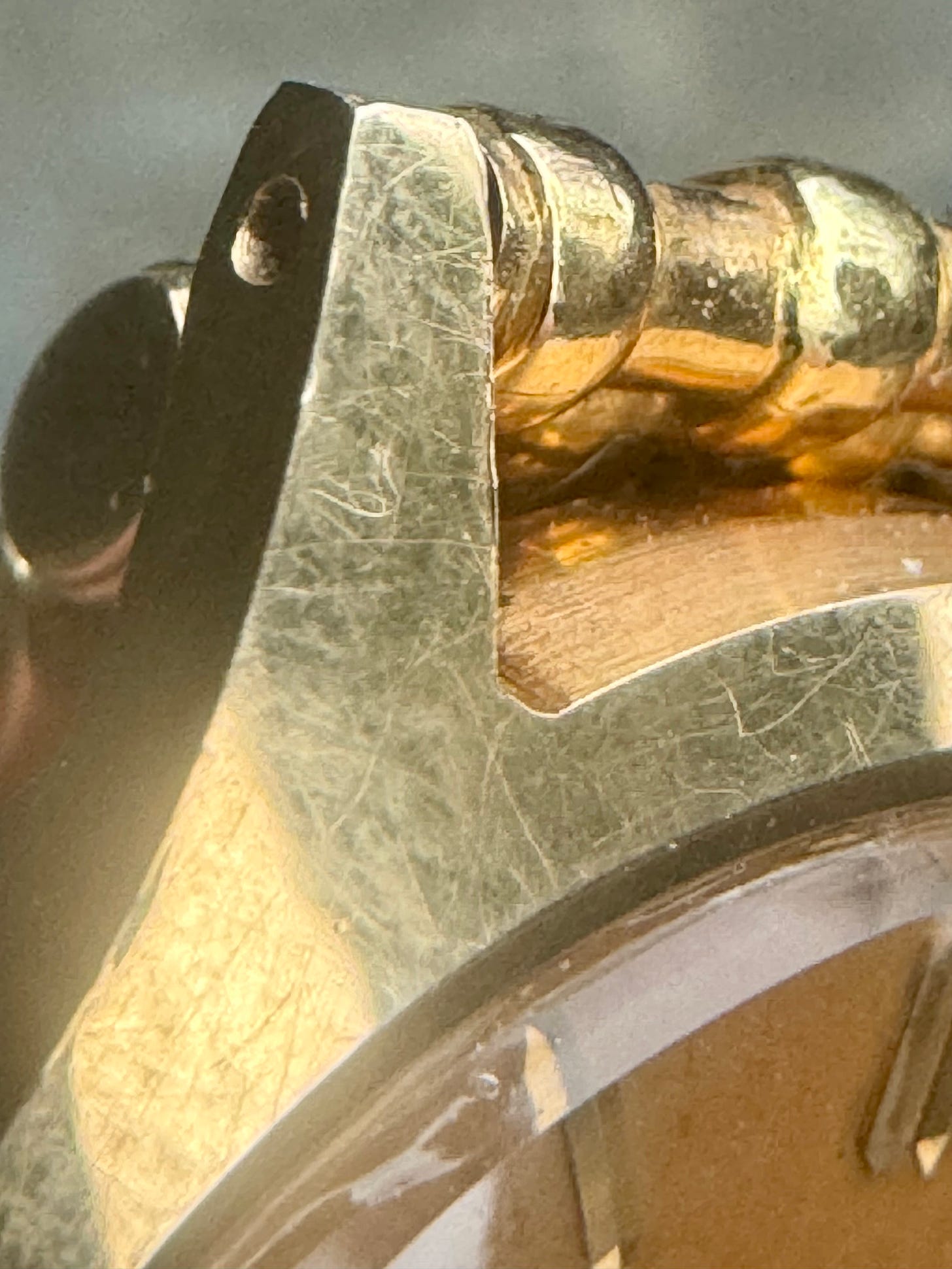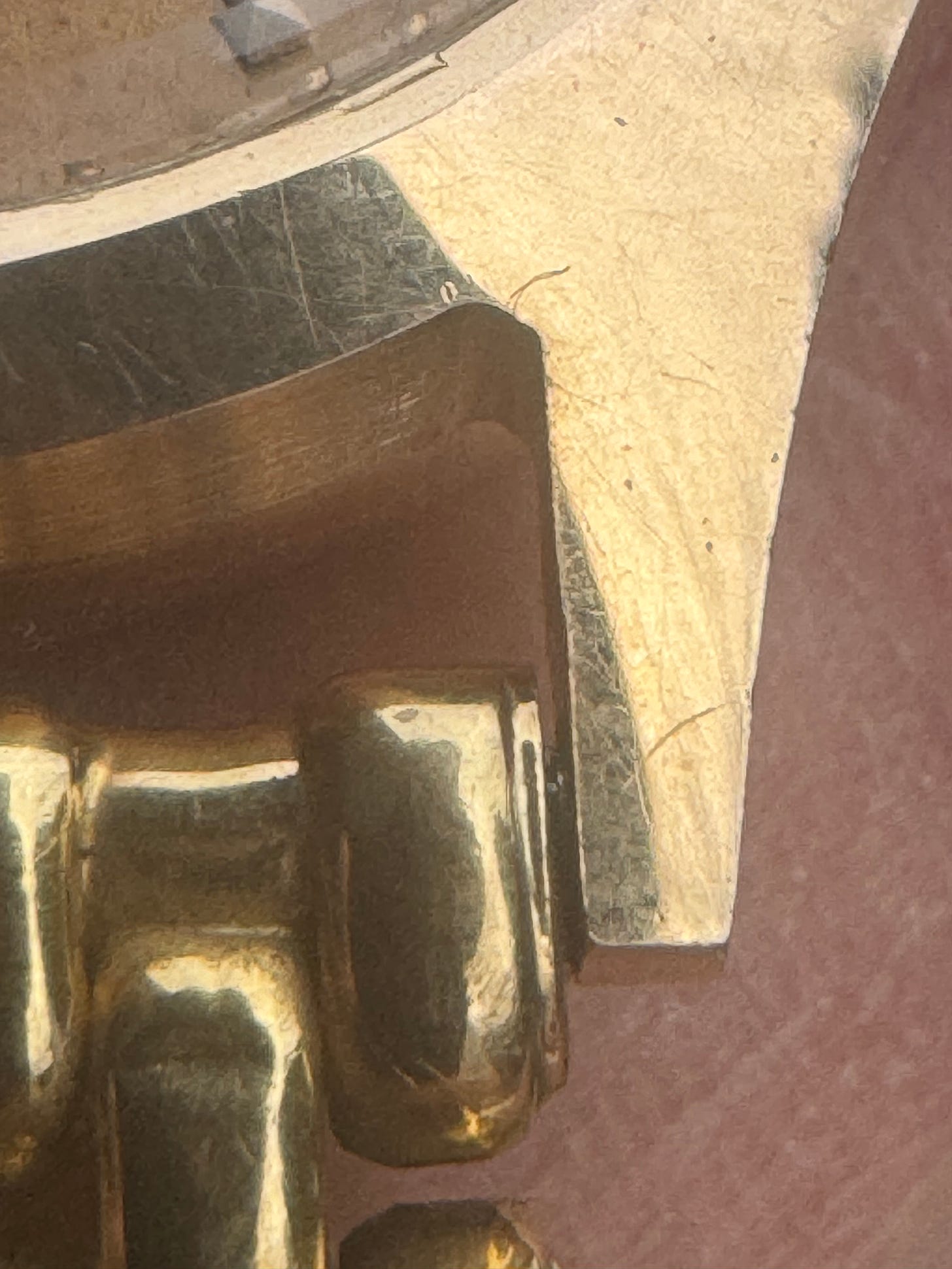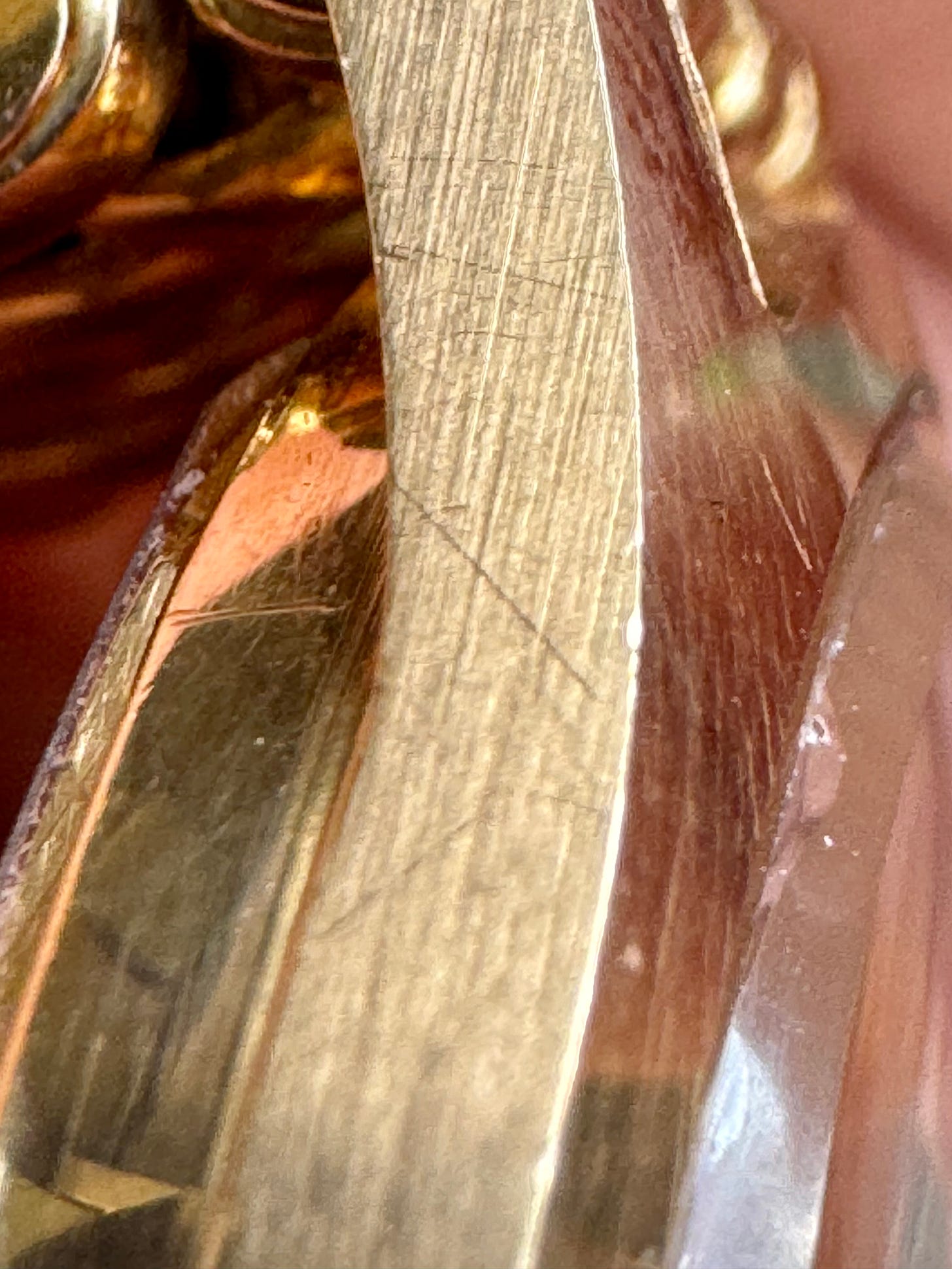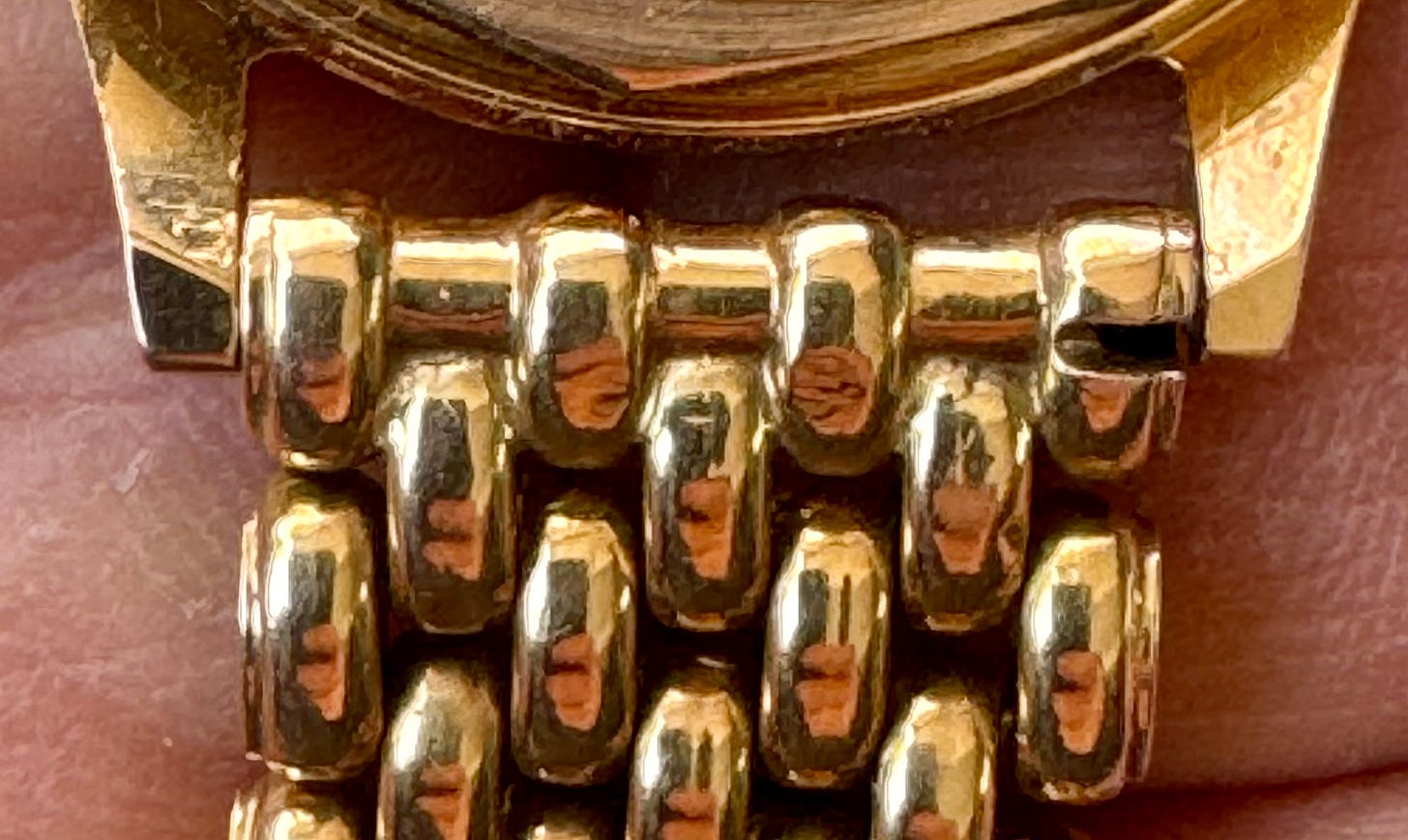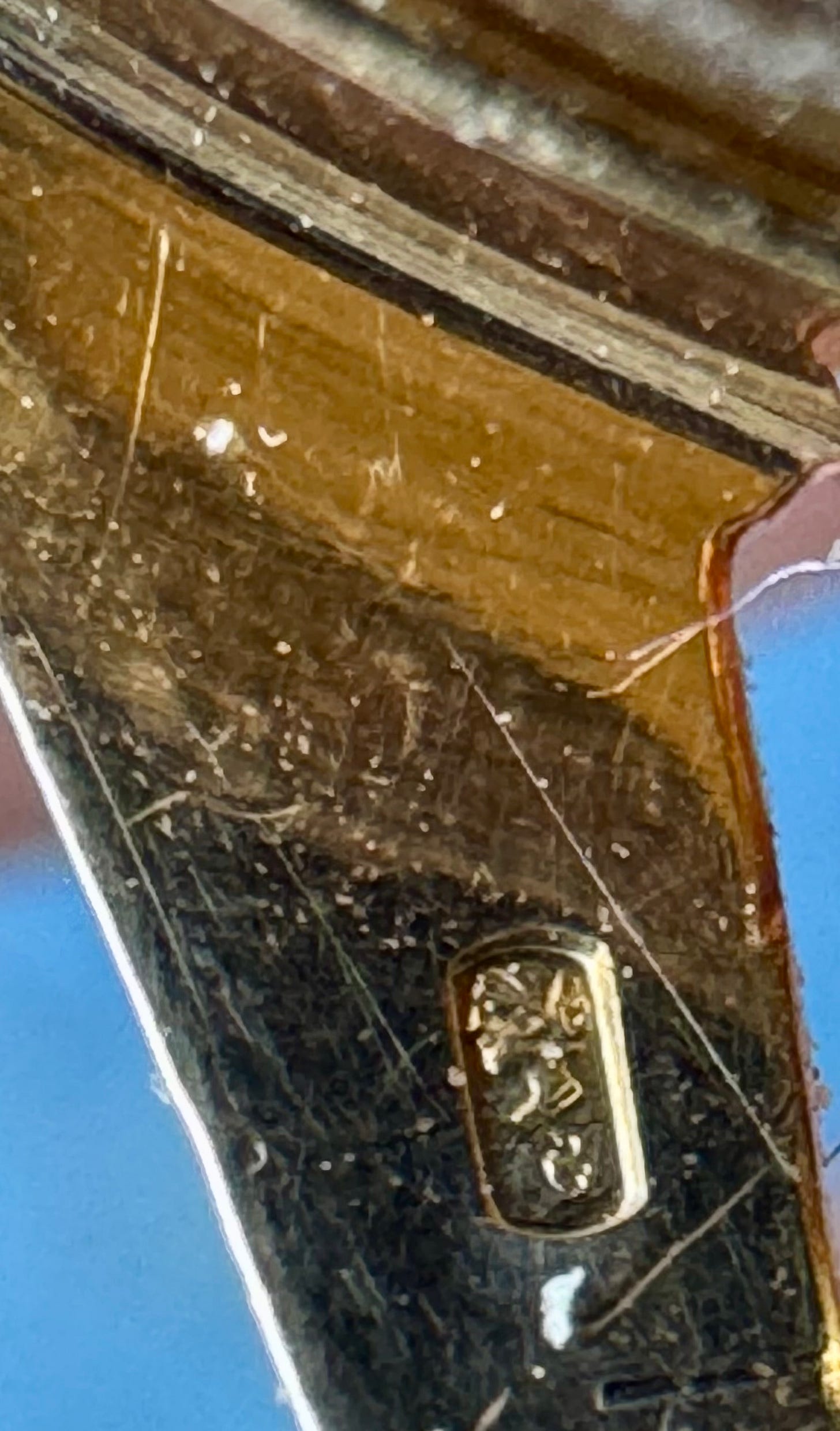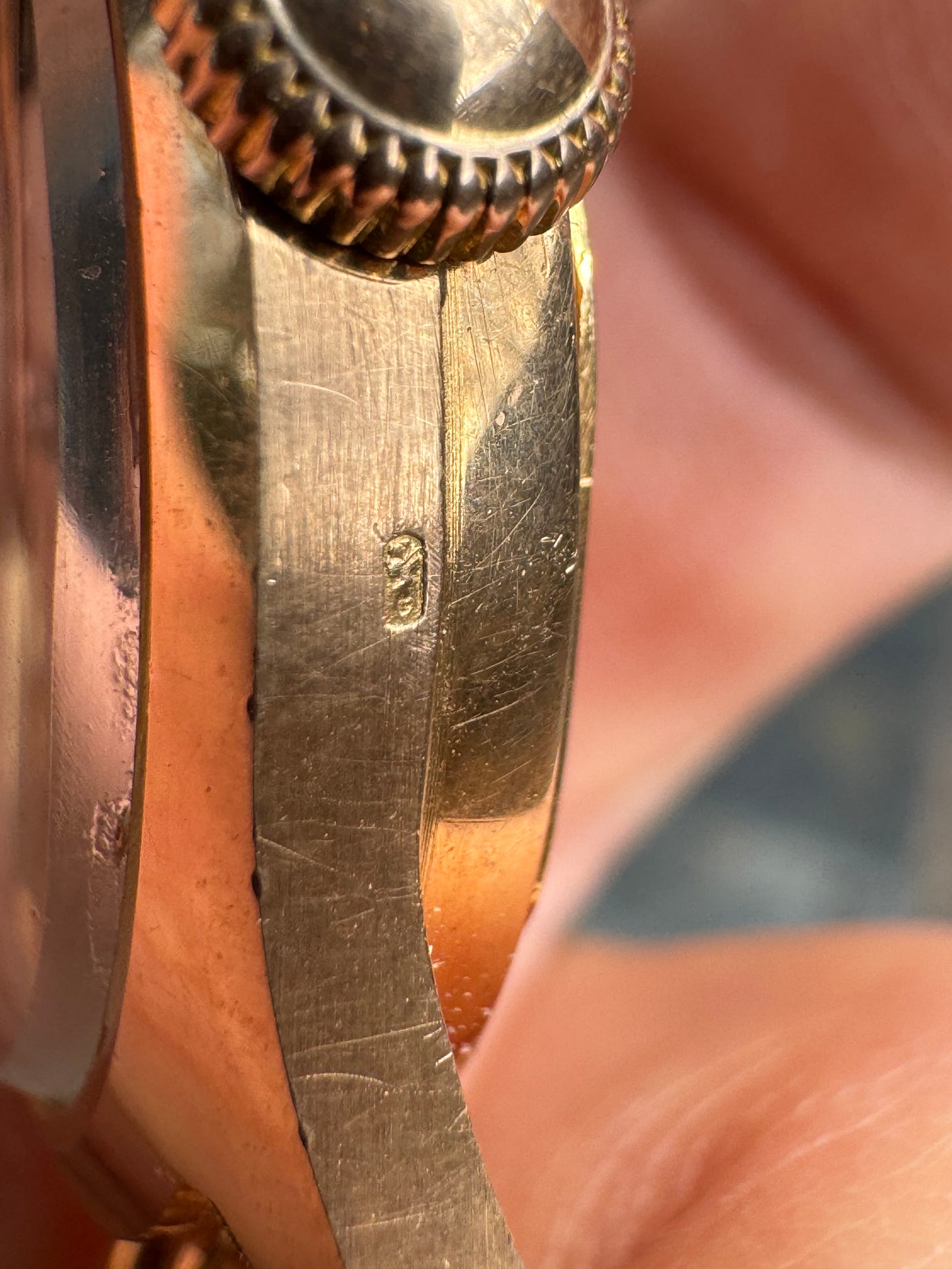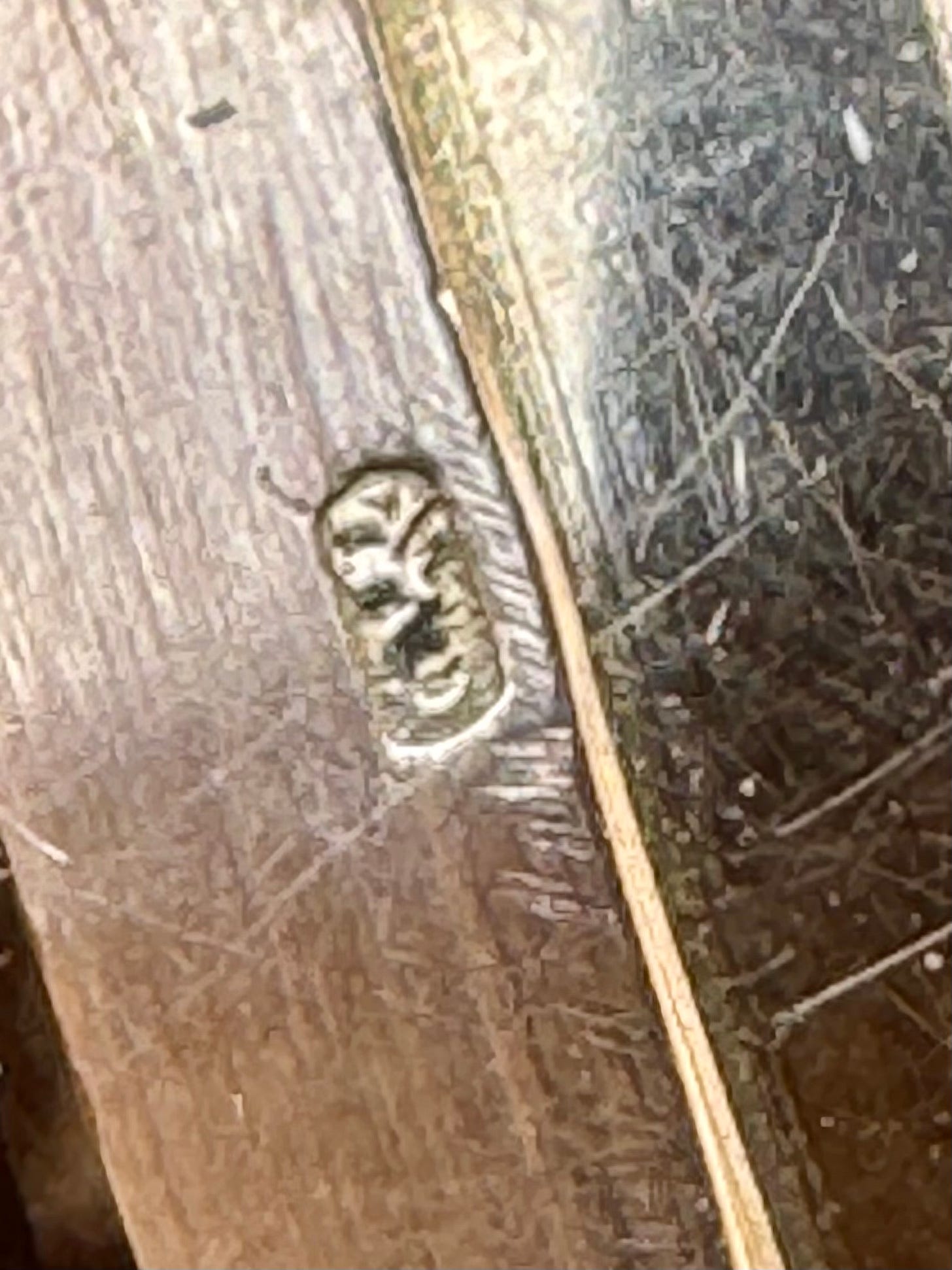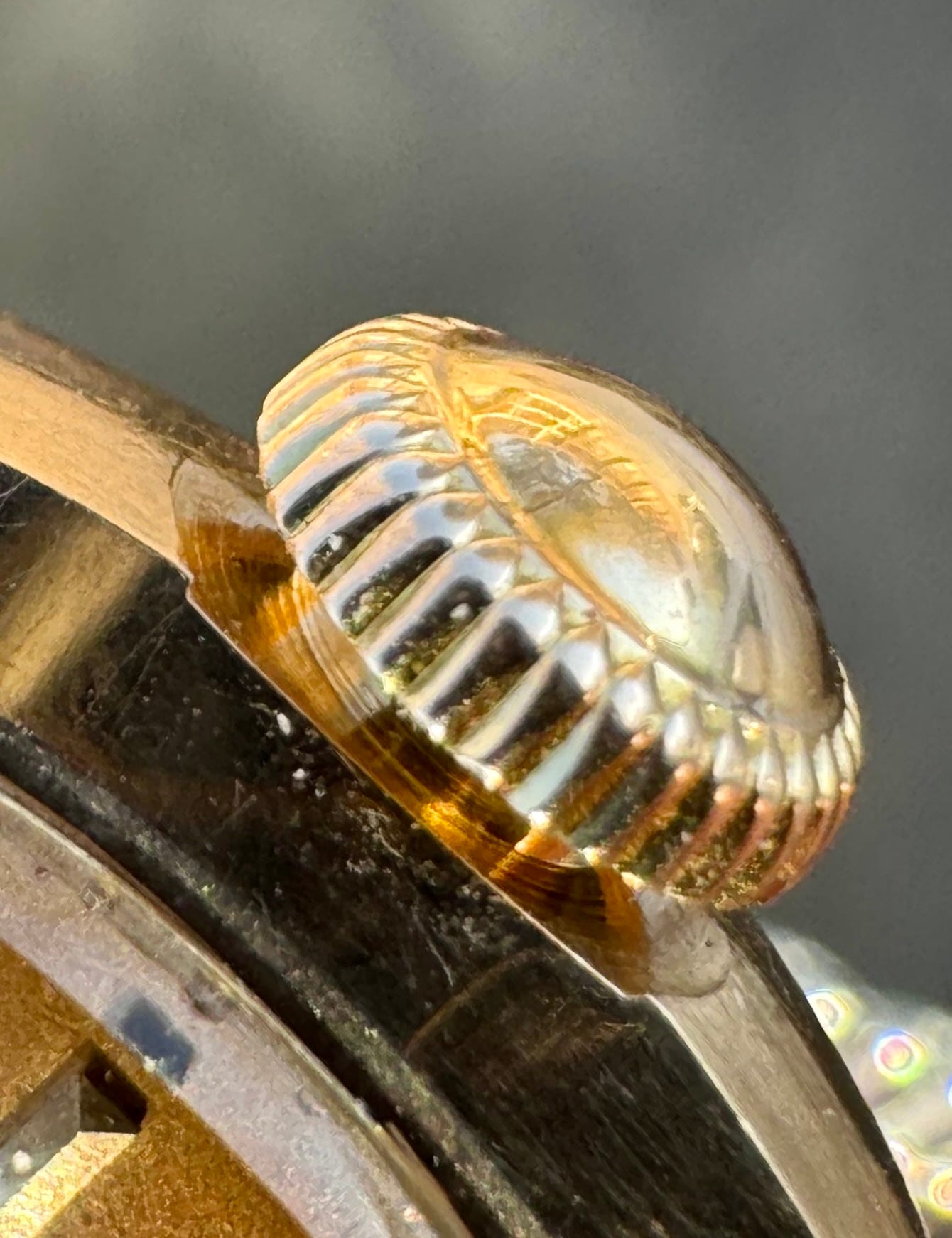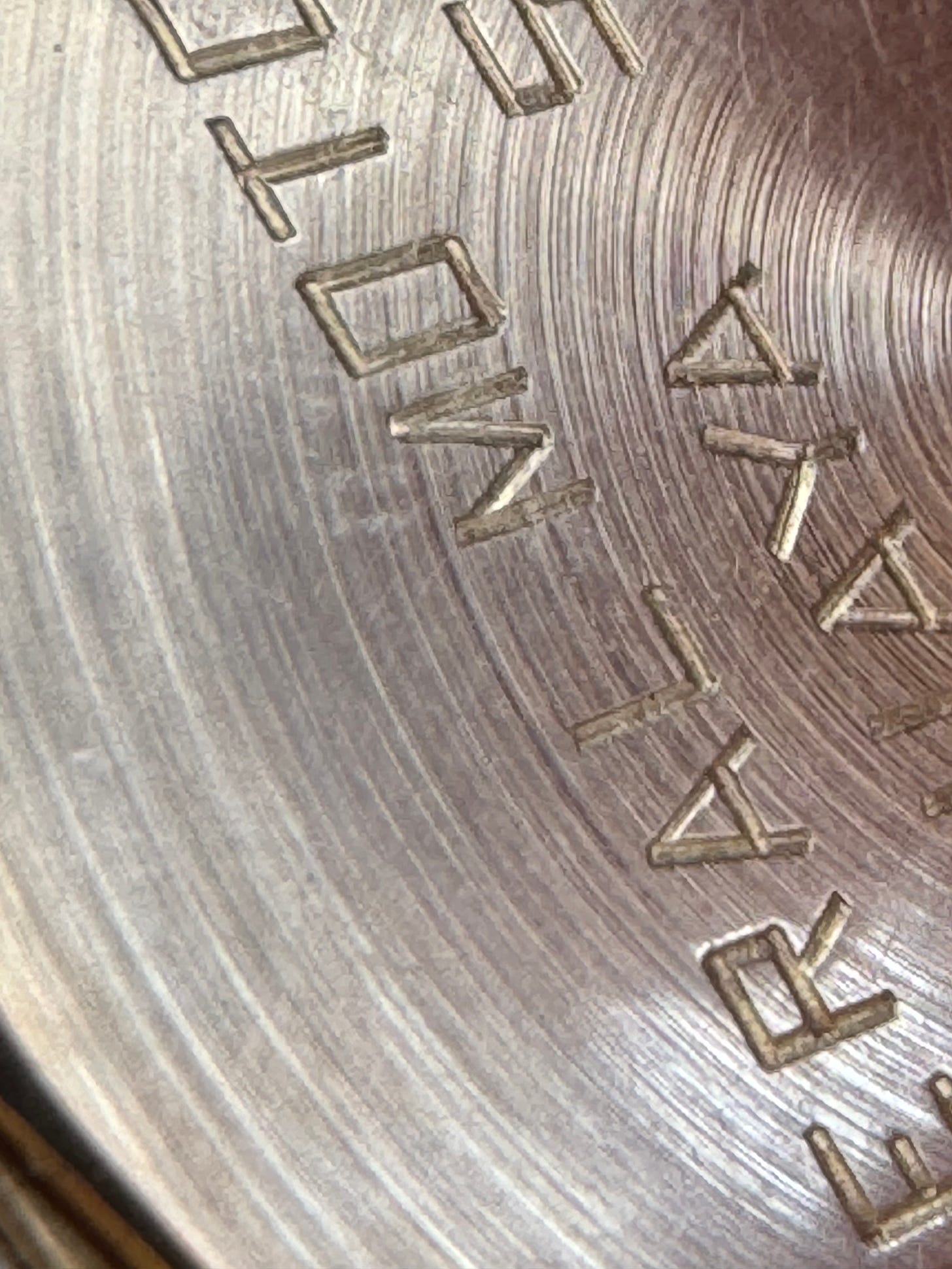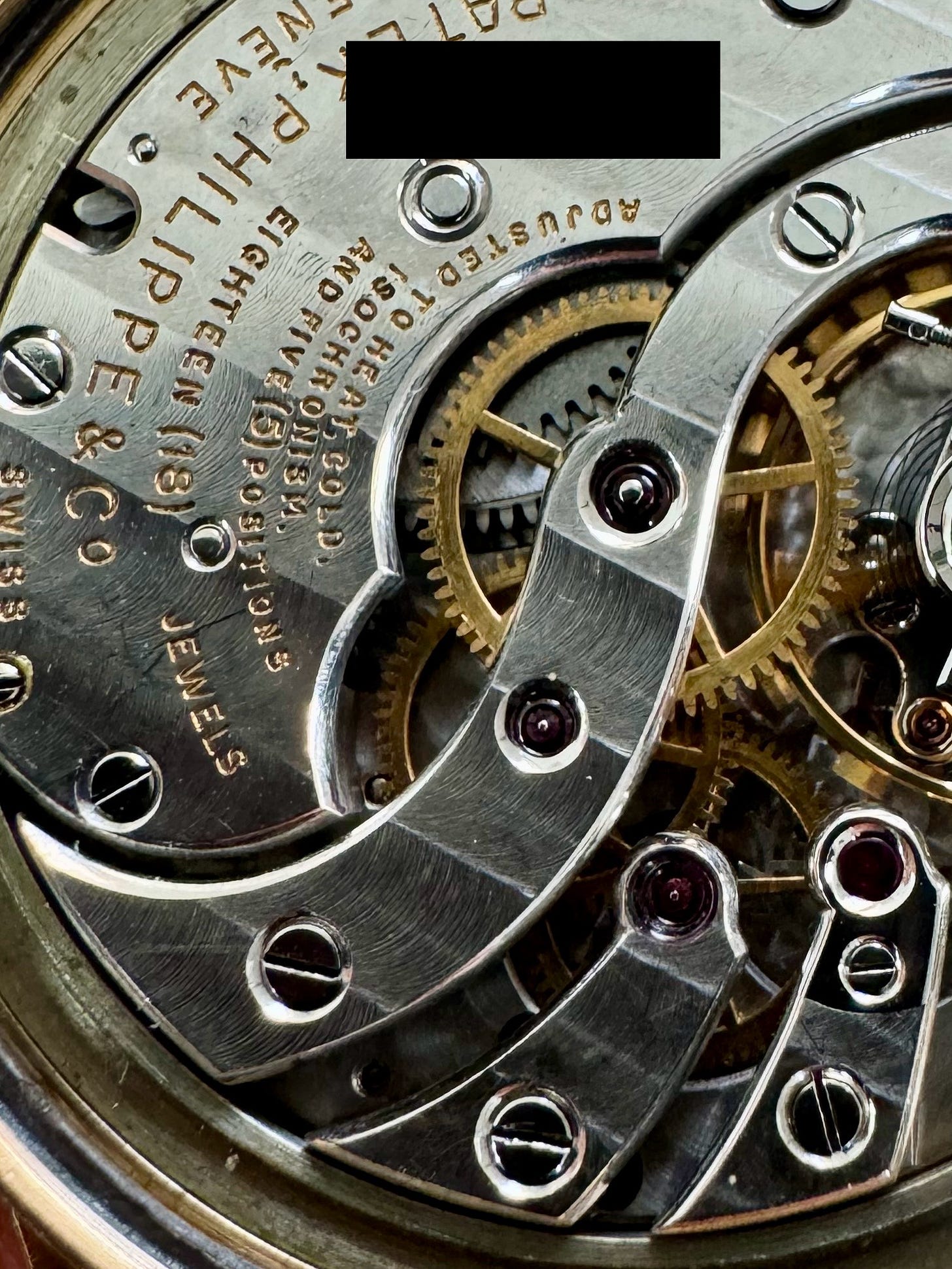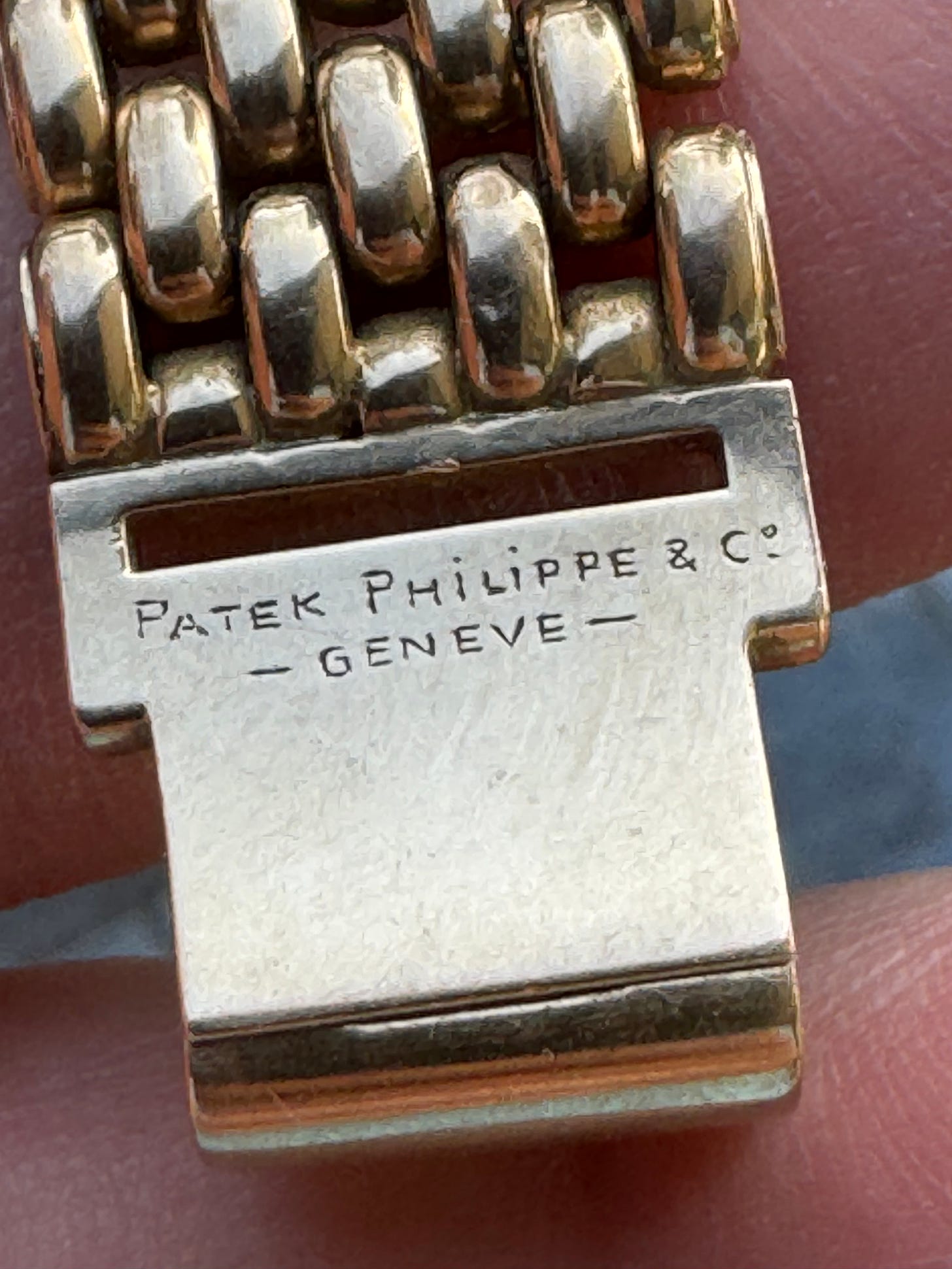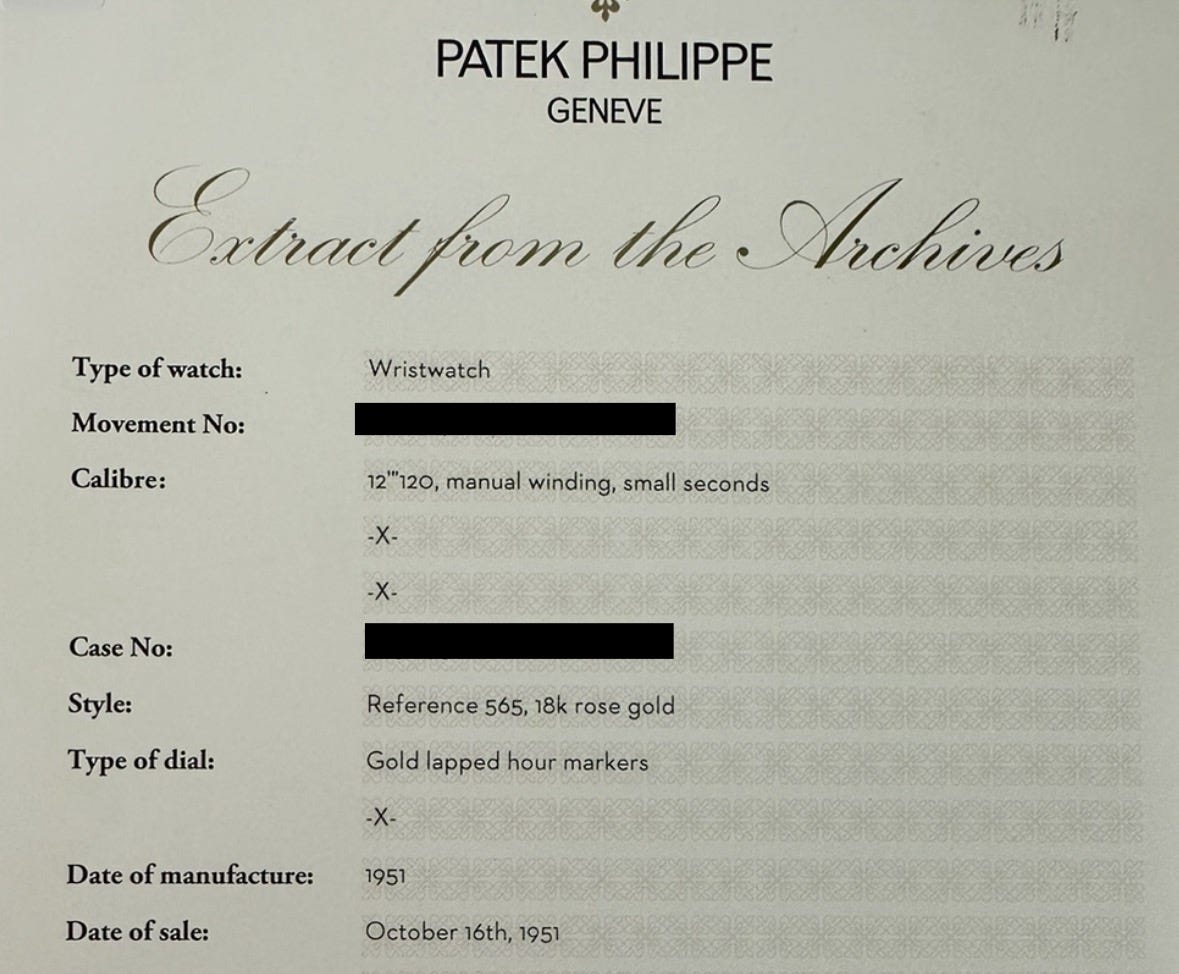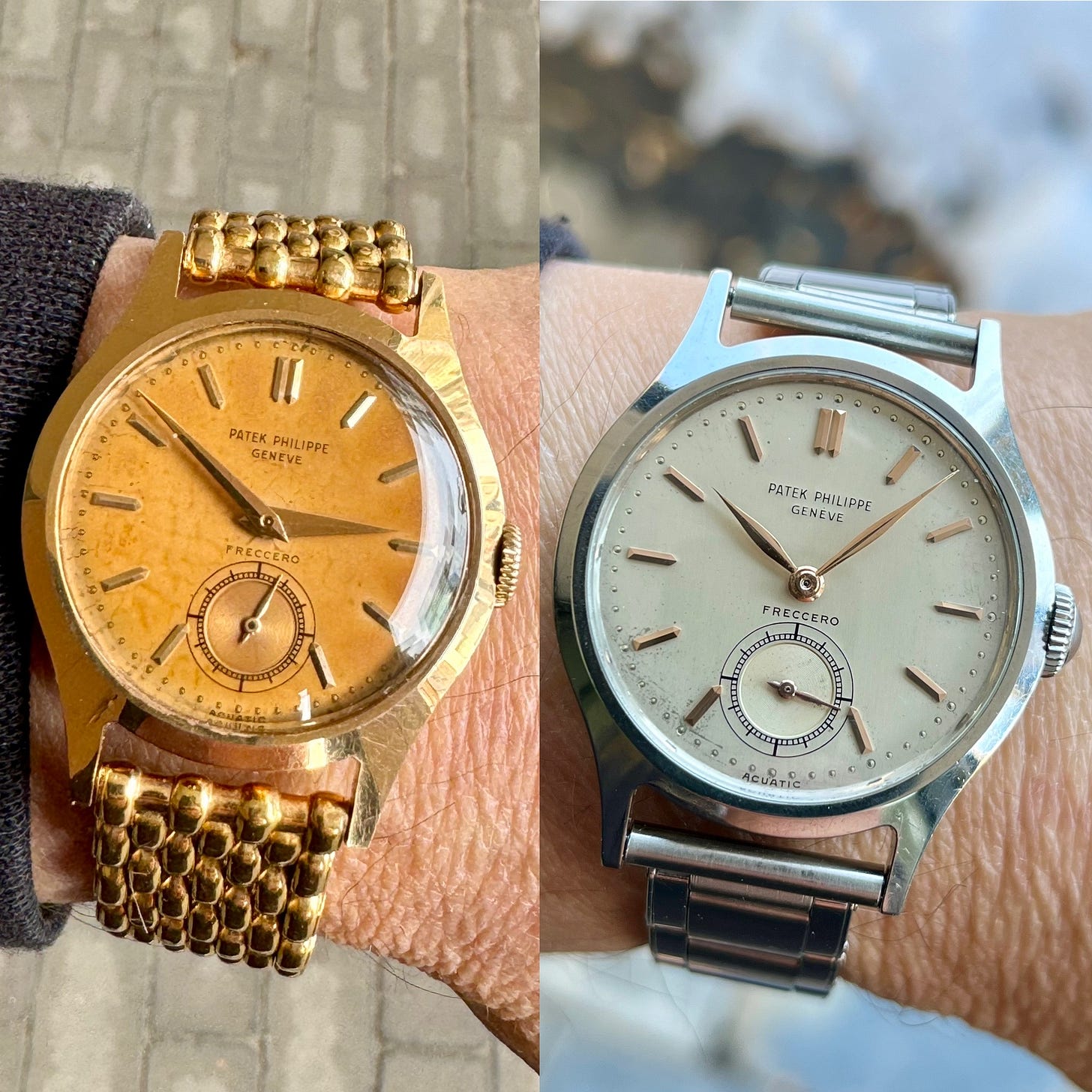(Fig.1 - on the wrist)
Introduction
No sooner did I publish an article recently with reference to seven known Freccero/Acuatic 565 examples in steel and rose gold when lo and behold…yet another previously unknown example appears! The subject of this article is a rose-on-rose example from 1951 with confirmation via extract from Patek (Fig. 21). From research, this freshly discovered example previously unknown in market is the third publicly known rose on rose 565 with Freccero double signature and “Acuatic” text printed at the lower six o’clock position. The two previously known examples appeared publicly at auctions in the past. One with unique and alternating exploding dot, dagger and arabic hour indices was first auctioned at Antiquorum in 2000 (Fig. 2) and later re-appeared on the auction scene at Monaco Legends in 2019 (Fig. 3). The second example with lapped indices was auctioned at Sotheby’s more recently in 2022 (Fig. 4). Rose gold 565 examples represent the rarest of metals used in the production of this iconic reference, followed by yellow gold, with steel being the most produced. It’s believed there are around thirty examples of 565 known to market that were cased in rose gold and even fewer of those that were cased in rose gold with rose dials. I’ve been able to locate nine known rose on rose examples. Taking it even a step further in the rarity department, come these three known examples of rose on rose with Freccero double signed dials and “Acuatic” print. In my previous article I mentioned a theory about the likely origin of the “Acuatic” print on these dials. In summary, rose gold is the rarest metal that was used for 565 production by the numbers. Of the approximately thirty rose 565, nine also have a rose dial and only three have a rose dial with Freccero and Acuatic printings currently known respectively, as of this writing. Although not the subject of this topic, given the rarity I’d be remiss not to mention the only other double signed rose on rose example I’m aware of was auctioned in 2019 by Phillips in the Geneva “Double Signed” auction. It’s double signed with the name of Cuban retailer, Le Palais Royal Habana and was presented on a stunning Gay Freres stretch rivet bracelet Here.
(Fig. 2 - first known, courtesy Antiquorum)
(Fig. 3 - first known, courtesy Monaco Legends)
(Fig. 4 - second known, courtesy Sotheby's)
The Dial
The subject of this writing is quite interesting and unique, as it made its way out of Uraguay recently. It appears to have been exposed to very warm climate conditions and stored away for years in South America based on observations of its overall condition. The dial is completely original with a rich and bold engraved, enameled signature and full Freccero and “Acuatic” printings on the lower dial without signs of loss to the engraved enamel signature, sub-seconds track or printings which are usual signs of past intervention (Figs. 5, 6). Hands are classic dauphine with leaf type for sub-seconds. The result of climate exposure and storage conditions over time is what I consider to be a very unique and pleasant topicalization of a rose dial. This topicalization effect of the dial resembles something of a crème brûlée appearance or visual of sand on an ocean floor when viewed from above, per remarks shared with me from some fellow collectors. The color of the dial varies based on light conditions and transitions from a darker rose to a tangerine tone when observed in direct sunlight (see video below 👇🏻).
A somewhat similar tone and texture is also observed on the example that was auctioned at Antiquorum and Monaco Legends (see Fig. 7 below).
(Figs. 5,6 - dial patina)
(Fig. 7 - dial patina courtesy Monaco Legends)
The Case
The screw back, water resistant case was manufactured for Patek by the famed FB/Taubert casemaker. It presents with a variated tone of rose gold, which appears a touch rosier when viewed from the sides as opposed to the top. I’m not a metallurgist, but… could this be from exposure to UV light affecting the case top to a greater degree? From close inspection, I believe the case to be in original condition as evidenced by the following points. 1) Overall, the case presents with honest and light wear, yet is very sharp with crisp transitions, full and proportional lugs. (Fig. 8, 9). 2) Side case brushings are consistent on both sides and the lug bottoms have proportional platforms on the tips (Figs. 10, 11, 13). 3) Both hallmarks are deep, with defined relief. The underside lug hallmark is crisp and clear as would be expected, since protected from wear (Fig. 12). The hallmark located on the lower crown side is also incredibly crisp with detailed relief (Figs. 13, 14) and does not show signs of having been polished. A hallmark in this location loses its definition from intervention and when polished, loss of detail, relief and border depth shallowing are observed. Another sign of originality is the crisp bezel transition on the mono-bloc case (Figs. 8, 9). 5) The connection point of the crown to case side displays uniform indents that would have been immediately softened or altogether lost from a case polish (Fig. 15). 6) The case back has an interesting commemorative presentation engraving that is sharp and deep. The concentric finishing is also very crisp. Under magnification the circular brushings do not intersect into any portion of the commemorative engraving (Fig. 16). It’s quite special to see such a rare example survive over 70 years without signs of intervention that would have affected its original geometry from when it left the manufacturer. Based on images available, this example appears to be the sole member of the three rose on rose examples with a case displaying all of these above mentioned attributes. This case has all the desired attributes.
(Figs. 8, 9 - lug detail)
(Figs. 10, 11 - case side brushing, symmetrical lug platforms)
(Fig. 12 - under lug hallmark)
(Fig. 13 - crown side case brushing, hallmark)
(Fig. 14 - close up view of crown side hallmark)
(Fig.15 - crown contact borders)
(Fig. 16 - case back engraving, circular brushing)
The Movement
A clean and beautiful 12-120 movement (Fig. 17) is always a treat to view when removing the screw back and popping off the dust cover that provides protection from elements and magnetism. The 12-120 movement powered the 565 1st series with sub-second models during their production run from 1938-1952. Based on the case number, it was likely one of the very last used in the 565 1st series prior to the 12-400. The 12-400 was used in the final production of very few ref. 565 2nd series before the 565 was succeeded by ref. 2533 around 1952. The 12-400 is reported to be known in close to just ten 565 examples across all metals. Note the attention to detail on the anglage and Geneva waves. Amazing to see this level of hand finishing on an aspect that was hidden away from the owner.
(Fig. 17 - 12-120 movement detail)
The Bracelet
Originally born on a leather band, present example currently sports a very rare Ponti Gennari rose bead bracelet with Patek stamping on the clasp. Ponti Gennari collaborated with Patek Philippe on stylish bracelet and case designs during the golden era and the quality observed of this bracelet is without peer from the era in my opinion. Stay tuned for more to come on this manufacturer and their objects of art.
(Figs. 18 -20 - Ponti Gennari detail)
(Fig. 21 - extract confirmation)
In Conclusion
Present Patek 565R example is extremely rare and unique. I’m pleased to write about and share my observations of a second fresh to market, unique and rare 565 reference following my previous article. I believe this 1951 example pairs quite well with its steel sibling from 1949 (Fig. 22).
(Fig. 22 - ‘51 and ‘49 565 siblings)
I enjoy writing out of an interest to document and share content about examples of rare and unique vintage watches I’ve experienced as a resource for those with a similar curiosity in the community. On any given future day, who knows what new discoveries may present of previously unknown examples that challenge our opinions and reference points about certain collectible pieces from the past.
Thanks for reading.
@aircooltime

